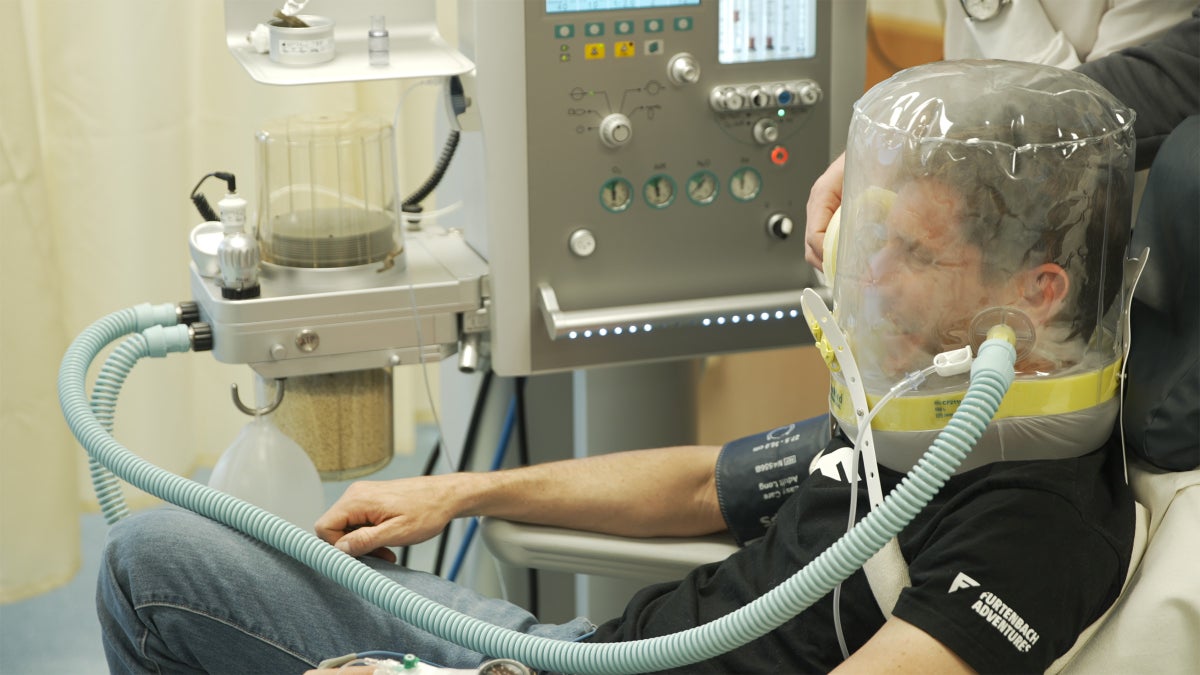
Picture yourself in your office. Your phone buzzes with a text message: Time to go! You sprint downstairs to a waiting taxi and zip to the airport, where you board an overnight flight to Kathmandu. You land, hop in a helicopter, and soar over the Himalayas to Mount Everest Base Camp, where Sherpas hook you up to oxygen. You and your guides climb the Khumbu Icefall, Western Cwm, Lhotse Face, and continue on to the summit, where you snap a triumphant selfie. You then descend 11,400 vertical feet back to Base Camp, where a helicopter whisks you to the airport, and you board your flight back home. One week after receiving the text, you’re back in your office.
Sounds like a scene from a science fiction movie, right?
In May, an Austrian mountaineer and guide named Lukas Furtenbach will take four paying clients on a guided expedition to the top of Everest not unlike the one described above. The entire trip, door to door, will last just seven days. That’s about one-third the length of the speediest Everest expeditions currently offered by guiding companies. And it’s much shorter than most guided ascents of the world’s highest peak, which typically last anywhere from six to eight weeks. On those trips, climbers complete multiple acclimatization hikes up the mountain to adjust to the extreme altitude.
“Our type of expedition opens Mount Everest up to people who don’t have enough free time for the traditional experience,” Furtenbach told Outside. “We are confident they will summit. Our reputation is on the line, and our business would be impacted if we fail.”
All four clients are from the U.K., which means they will start their journeys at or near sea level. According to Furtenbach, each client is paying $153,000 for the trip.
So, what’s Furenbach’s secret to speed? In short, xenon gas. A few weeks before traveling to Nepal, Furtenbach’s clients will travel to a doctor’s office in Germany where they will don a diving bell-like mask and inhale xenon gas. Studies have suggested that the odorless gas can protect vital organs from altitude sickness, while boosting the body’s production of erythropoietin, or EPO, the hormone that stimulates the production of red blood cells. When used alongside traditional at-home acclimatization methods, xenon gas can make the human body capable of withstanding Everest’s extreme altitudes, according to Furtenbach.
“We are doing this primarily for safety as a form of preventing altitude sickness,” Furtenbach says. “This is not about performance enhancement.”
The news of Furtenbach’s experimental tour caused a stir in the mountaineering world when he announced it in January, and in the ensuing weeks, the entire industry of guides and expedition operators appeared to wrestle with this new method. Some guides voiced their support of the experimental procedure, others chastised it, while others raised questions about safety. On January 22, the International Climbing and Mountaineering Federation, a global body that advocates on behalf of climbers, published a terse statement condemning the practice.
The ordeal has forced mountaineers and guides to revisit the ethics—or lack thereof—that climbers follow on the world’s highest peak, and to ask themselves how far climbers should go to improve their changes of actually reaching the top, and who belongs on the peak.
“The old adage, ‘Just because you can, doesn’t mean you should,’ applies in this context,” says mountaineer and longtime Everest chronicler Alan Arnette.
The post Is This the New Way to Climb Mount Everest? appeared first on Outside Online.















